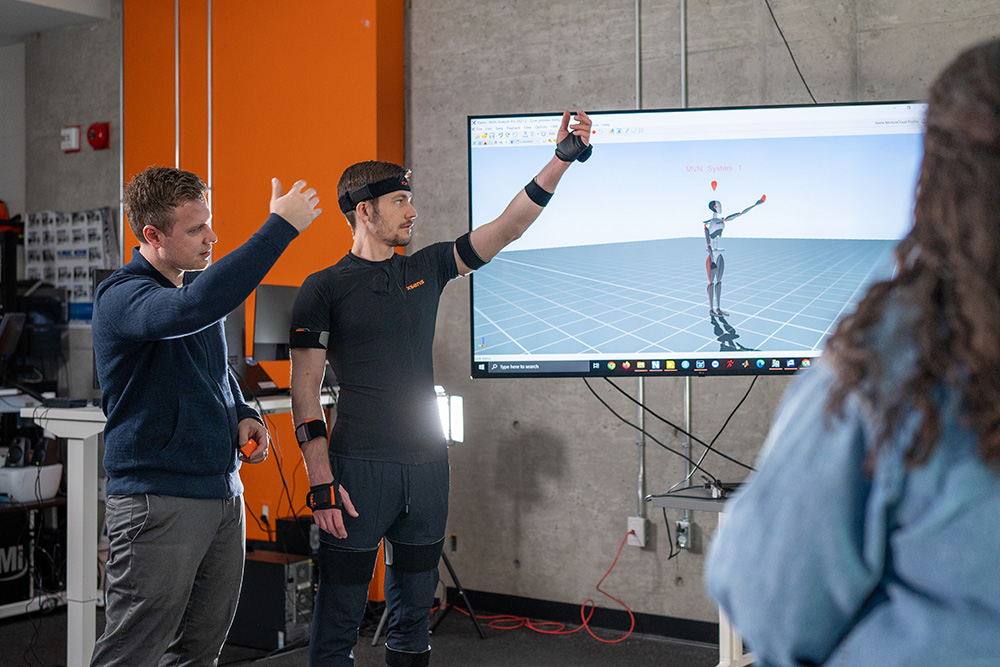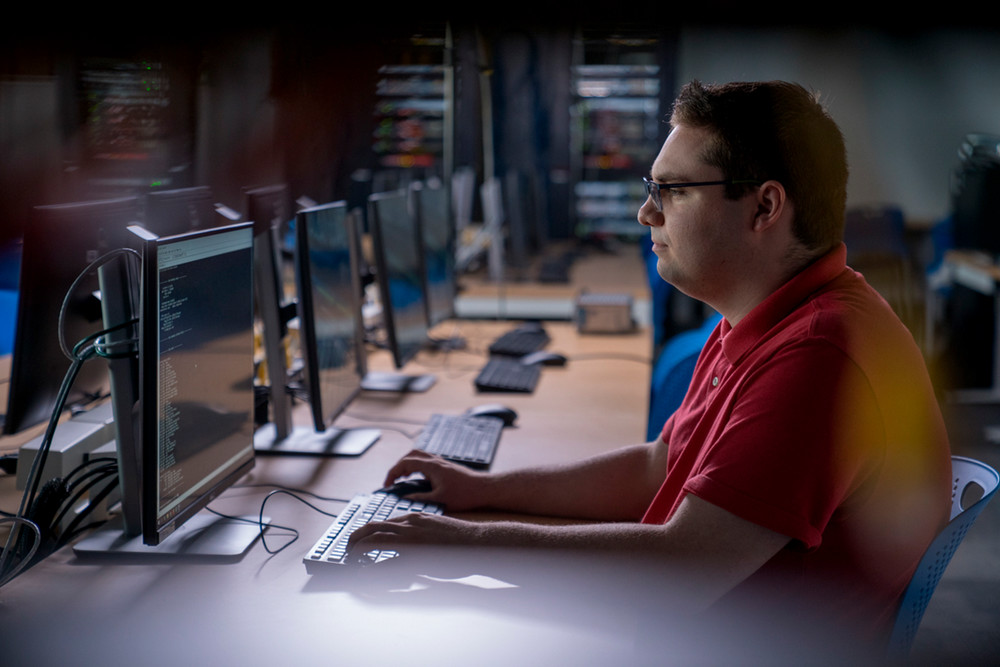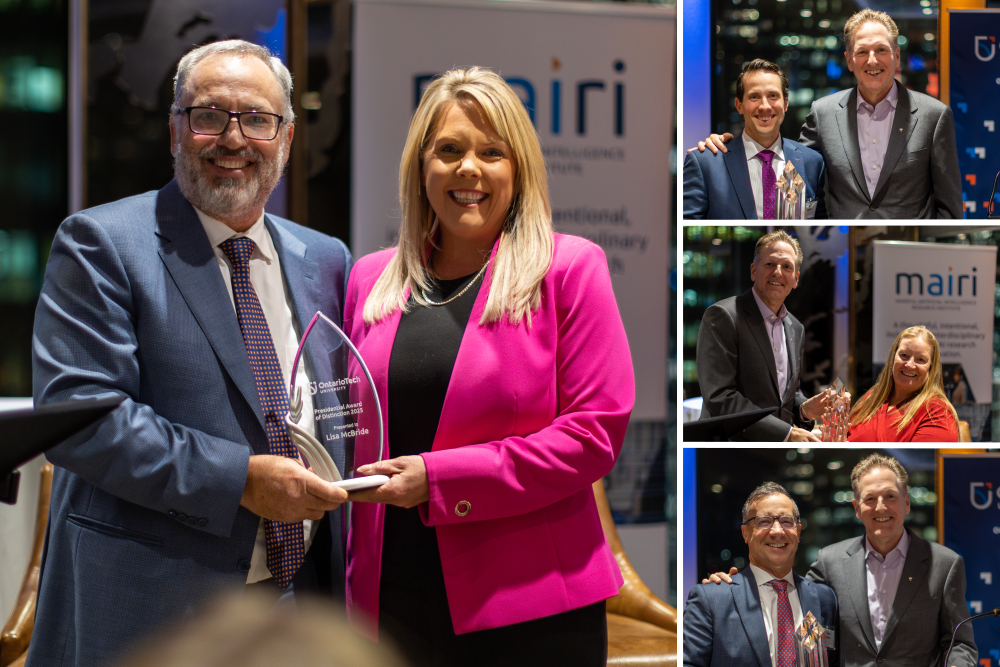From aspiring dentist to virtual reality ergonomics researcher: How Dr. Nick La Delfa is helping GM design safer, more productive work
October 30, 2025

When Dr. Nick La Delfa talks about ergonomics, his excitement often turns to the possibilities of virtual reality (VR). Dr. La Delfa is advancing the use of VR to make workplaces safer, long before injuries happen.
One proactive approach his team is studying allows real people, such as experienced automotive workers, to embody digital human models (DHMs) and perform virtual assembly tasks on a simulated line. Their natural movements are captured in real-time, allowing ergonomists to assess posture, reach and spine loading without ever having to step into a factory.
“The results were really promising,” Dr. La Delfa says. “VR is becoming more feasible than ever in this context, especially with the recent advances in wearable motion capture technology.”
This research, supported through a collaboration with General Motors and Dr. Joel Cort from the University of Windsor, represents a major shift in ergonomics. Instead of waiting until injuries accumulate before redesigning jobs, VR enables risks to be identified during the design phase, avoiding costly fixes later and reducing the likelihood of long-term injuries.
But Dr. La Delfa’s journey to VR and ergonomics wasn’t straightforward. When he first entered university, he planned to become a dentist. That changed in his third year, when an ergonomics course caught his attention.
“I was drawn to the problem-solving nature of ergonomics,” he recalls. “You need to diagnose issues and come up with creative solutions without causing a whole host of new problems.”
His undergraduate thesis bridged both worlds. He studied the ergonomic risks faced by dental hygienists, who have some of the highest rates of neck and shoulder injuries due to hours spent hunched over patients.
“Many leave the field early because of chronic pain,” Dr. La Delfa says. “That’s when I realized the impact ergonomics could have on people’s careers and quality of life.”
Today, as an Associate Professor in Ontario Tech University’s Faculty of Health Sciences and Principal Investigator at the university’s Occupational Neuromechanics and Ergonomics Lab, he continues to apply that insight to industry.
Workplace injuries are preventable and often costly, sometimes ranging from $117,000 to $234,000 per incident, according to healthy workplace advocacy group OSG. These can have ripple effects including lost productivity, increased training costs, and pressure on the health-care system.
By integrating VR into the design process, GM can evaluate workstation layouts and product designs before they’re built, preventing injuries and avoiding expensive redesigns.
“With good ergonomics design, you can get ahead of a lot of these potential risk factors,” Dr. La Delfa says. “Investing in ergonomics can have major positive implications for industrial productivity, the everyday lives of workers, and our health-care system as a whole, as many of these occupational injuries are largely preventable.”
The partnership has also created opportunities for Ontario Tech students, who now use the same VR tools in Dr. La Delfa’s undergraduate ergonomics course, supported by the Faculty of Health Sciences Dean’s Innovation Fund.
Ryan Porto, Technical Specialist in Ergonomics at General Motors, says the partnership has been extremely beneficial for the automotive manufacturer, noting that Ontario Tech students are learning skills to make a real impact in the workplace.
“The students are taught several of the tools we use in our plants to evaluate jobs on the assembly line,” Porto says. “Collaborating with Dr. La Delfa at Ontario Tech has strengthened GM’s ability to conduct advanced ergonomic assessments.”


